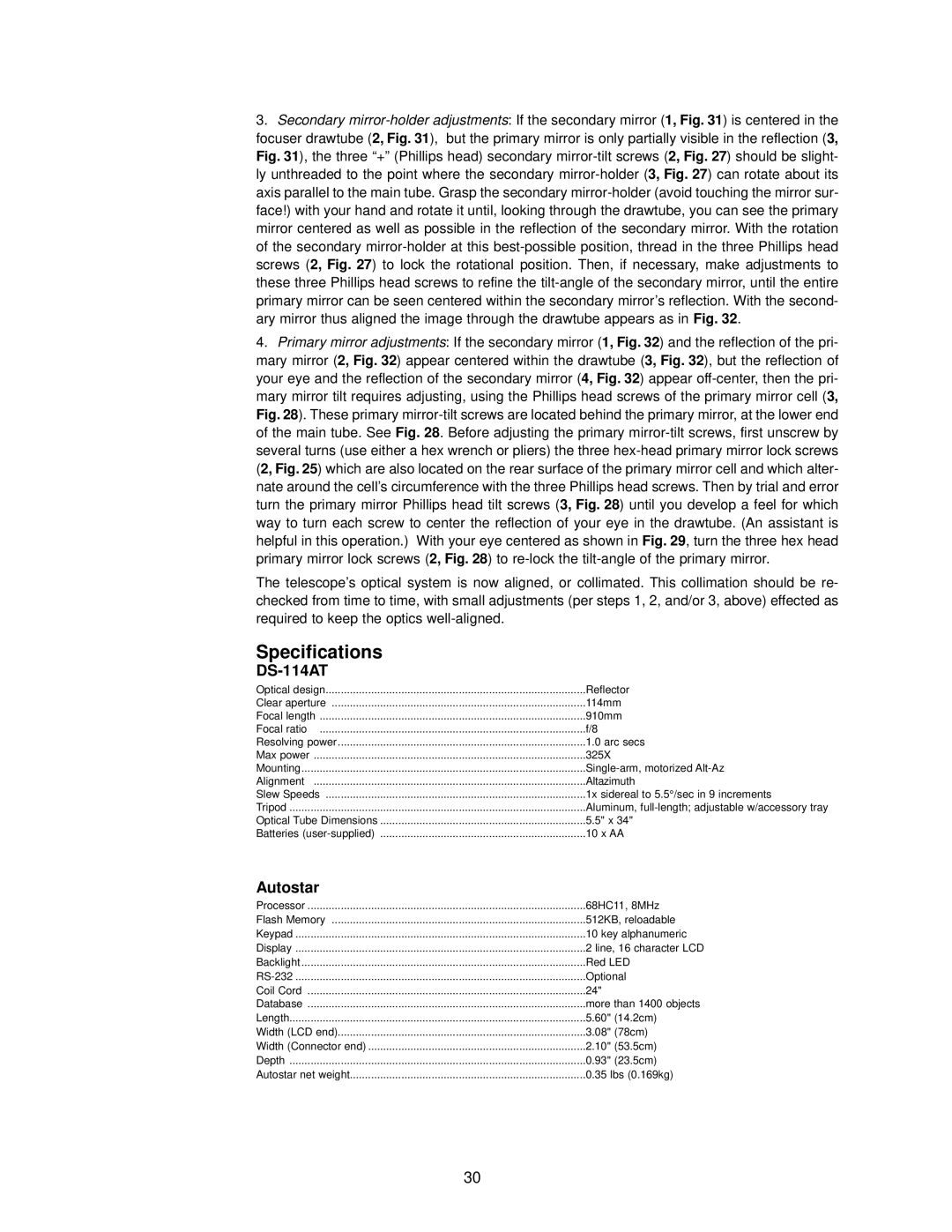DS-114AT specifications
The Meade DS-114AT is a popular entry-level telescope that combines user-friendliness with impressive optical performance, making it an excellent choice for budding astronomers and hobbyists. With its robust design and advanced features, the DS-114AT offers a gateway to the wonders of the cosmos, whether you’re observing the craters of the Moon, the rings of Saturn, or distant star clusters.One of the standout features of the Meade DS-114AT is its 114 mm (4.5-inch) diameter aperture. This sizable opening allows for greater light-gathering capability, resulting in brighter images and improved visibility of celestial objects. The telescope is equipped with a 900 mm focal length, providing a good balance that allows for both wide-field viewing and detailed observations of planets and lunar features.
The DS-114AT utilizes high-quality optics featuring a parabolic mirror design. This design minimizes spherical aberration, ensuring crisp images of astronomical targets. The telescope is also equipped with a fully coated optical system that enhances light transmission and reduces glare, providing clearer images compared to other telescopes in its class.
Portability is another significant advantage of the Meade DS-114AT. Its lightweight and compact design allows for easy transportation, making it ideal for backyard stargazing or trips to darker skies. The telescope comes with a sturdy yet lightweight altazimuth mount that facilitates smooth movement, allowing users to easily locate and track celestial objects.
The Meade DS-114AT also features a user-friendly electronic control system, including an automated GoTo functionality that aids in navigating the night sky. With a simple push of a button, users can precisely locate thousands of celestial objects, making the telescope accessible for beginners who may not yet be familiar with star maps and constellations.
Additionally, the telescope includes two eyepieces, a 9 mm and a 25 mm, allowing for various magnifications to suit different viewing preferences. The optical finder scope aids in quick alignment, ensuring a hassle-free observing experience.
In summary, the Meade DS-114AT stands out as a versatile, user-friendly telescope that provides excellent optical performance and advanced features. Its combination of a sizable aperture, high-quality optics, portability, and automated features make it an ideal choice for those looking to explore the universe, whether for casual observations or more serious astronomical pursuits. With this telescope, the night sky is truly within reach.
